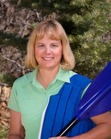Beth Groundwater's Blog, page 61
October 27, 2010
Just for Fun: How Do You Know You've "Arrived"?
Recently, I challenged the creative minds in the Rocky Mountain chapter of the Mystery Writers of America to list interesting ways for an author to know that she or he has "arrived". I didn't want the obvious ones like hitting the bestseller lists, getting a movie deal, etc. Instead, I was aiming for some laughs and maybe some head nods and "oh, yeahs". And, I'm not saying I've arrived--these are milestones I dream about attaining some day.
I came up with four to get them started:
1. A well-known blogger asks you to guest on their blog versus the other way around.
2. People STOP asking you to write their blockbuster story because they realize you're too busy.
3. A bobble-head doll for your main character exists.
4. You buy sharpies by the box versus one at a time.
Here's some that they added:
5. Someone says, "I've heard of you" instead of "Have I heard of you?" (Terry Odell)
6. When your name is larger than the title on the front of your book. (Sara Hoklotubbe)
7. When more people ask you to sign your book at a bookstore event than ask directions to the bathroom. (Laura DiSilverio)
What about you? Can you come up with a creative way for an author to know she or he has "arrived" to add to the list? Let's have some fun with this!
I came up with four to get them started:
1. A well-known blogger asks you to guest on their blog versus the other way around.
2. People STOP asking you to write their blockbuster story because they realize you're too busy.
3. A bobble-head doll for your main character exists.
4. You buy sharpies by the box versus one at a time.
Here's some that they added:
5. Someone says, "I've heard of you" instead of "Have I heard of you?" (Terry Odell)
6. When your name is larger than the title on the front of your book. (Sara Hoklotubbe)
7. When more people ask you to sign your book at a bookstore event than ask directions to the bathroom. (Laura DiSilverio)
What about you? Can you come up with a creative way for an author to know she or he has "arrived" to add to the list? Let's have some fun with this!
Published on October 27, 2010 06:00
October 25, 2010
Updating My Amazon Author Profile
Amazon has sent me two notices about the updated features in their "Author Central," so I figured it was time to update my profile there. You can see the updates here. Authors can now have more than one photo on our profiles, so I added a few of me "in action" as well as my headshots. I also beefed up my bio and set up an RSS feed from here onto my Amazon page. And, I tagged Deadly Currents as "my" book, so it would show up in my Bibliography.
If you're an author, have you updated your Amazon profile lately? If you're a reader, what do you like to see on authors' profiles. And, anyone want to start a discussion on my forum? Please?
Also, while fooling around on Amazon, I discovered a few new customer reviews on my already published titles. In the reviews for A Real Basket Case, fellow mystery writer Maureen Mullis wrote a glowing review on September 29th and book blogger Giovanni Gelati wrote an enthusiastic one on June 1st. Thanks, Maureen and Giovanni! Also, in the reviews for To Hell in a Handbasket, Amazon reviewer "birchleaf" wrote an very thorough and insightful review on March 6th. Thanks, "birchleaf"! Lastly, in the reviews for my science fiction novella, The Epsilon Eridani Alternative, T.L. Cooper wrote a great review on September 1st that focuses on the social issues in the novella. Thanks, T.L.!
Hey, if you've read any of my books and liked them, would you consider posting a customer review on Amazon? A lot of people, myself included, really like to read reviews by nonprofessionals to get a feel for a book before buying it. And, who knows, you may get a shout-out here on my blog like these other reviewers did. :)
If you're an author, have you updated your Amazon profile lately? If you're a reader, what do you like to see on authors' profiles. And, anyone want to start a discussion on my forum? Please?
Also, while fooling around on Amazon, I discovered a few new customer reviews on my already published titles. In the reviews for A Real Basket Case, fellow mystery writer Maureen Mullis wrote a glowing review on September 29th and book blogger Giovanni Gelati wrote an enthusiastic one on June 1st. Thanks, Maureen and Giovanni! Also, in the reviews for To Hell in a Handbasket, Amazon reviewer "birchleaf" wrote an very thorough and insightful review on March 6th. Thanks, "birchleaf"! Lastly, in the reviews for my science fiction novella, The Epsilon Eridani Alternative, T.L. Cooper wrote a great review on September 1st that focuses on the social issues in the novella. Thanks, T.L.!
Hey, if you've read any of my books and liked them, would you consider posting a customer review on Amazon? A lot of people, myself included, really like to read reviews by nonprofessionals to get a feel for a book before buying it. And, who knows, you may get a shout-out here on my blog like these other reviewers did. :)
Published on October 25, 2010 06:00
October 22, 2010
The Muddle in the Middle
Today over at Inkspot, the blog for Midnight Ink authors, I've contributed a post on "The Muddle in the Middle." I'm in the middle of the rough draft of the current manuscript I'm working on--the third book in the Claire Hanover gift basket designer mystery series. And that's always where the writing bogs down. I talk about why.
And I'm asking for comments there. If you're a writer, when do you tend to lose that motivation or get bogged down in the writing? And if you're a reader, is the middle of a mystery when you start to get confused and the reading slows down? Do you find yourself going back in the book to remember things, as I often do?
And I'm asking for comments there. If you're a writer, when do you tend to lose that motivation or get bogged down in the writing? And if you're a reader, is the middle of a mystery when you start to get confused and the reading slows down? Do you find yourself going back in the book to remember things, as I often do?
Published on October 22, 2010 06:30
October 20, 2010
Switching Gears...
I've been hard at work during the last two months writing the rough draft of the third book in the Claire Hanover gift basket designer mystery series. I've passed the half way point and can see the glimmer of a light at the far end of the tunnel. However, I've had to put that project aside for a little while.
Why? Because last Friday I received the galley proofs for the first book, titled Deadly Currents, in my new RM Outdoor Adventures series starring whitewater river ranger Mandy Tanner. This will be my last chance to make corrections in that book before it goes to print, so I will need to carefully comb through the pages.
Ever wonder where the term "galleys" or "galley proofs" came from? As Wikipedia states, "Galley proofs are so named because in the days of hand-set type, the printer would set the page into galleys, the metal trays into which type was laid and tightened into place. These would be used to print a limited number of copies for editing mark-up. The printer would then receive the edits, re-arrange the type, and print the final copy."
So, I'm switching gears to make those edits. 47-year-old, married Claire Hanover will give way to 27-year-old, single Mandy Tanner. Whitewater rafting scenes will take the place of gift basket construction scenes. One thing will remain the same, though--a murder will be investigated.
Why? Because last Friday I received the galley proofs for the first book, titled Deadly Currents, in my new RM Outdoor Adventures series starring whitewater river ranger Mandy Tanner. This will be my last chance to make corrections in that book before it goes to print, so I will need to carefully comb through the pages.
Ever wonder where the term "galleys" or "galley proofs" came from? As Wikipedia states, "Galley proofs are so named because in the days of hand-set type, the printer would set the page into galleys, the metal trays into which type was laid and tightened into place. These would be used to print a limited number of copies for editing mark-up. The printer would then receive the edits, re-arrange the type, and print the final copy."
So, I'm switching gears to make those edits. 47-year-old, married Claire Hanover will give way to 27-year-old, single Mandy Tanner. Whitewater rafting scenes will take the place of gift basket construction scenes. One thing will remain the same, though--a murder will be investigated.
Published on October 20, 2010 06:00
October 18, 2010
Read a Mystery in October!
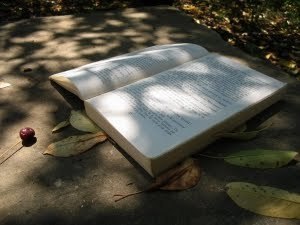
Did you know that the month of October is Mystery Month? And that it's also National Reading Group Month? Bookstores and libraries across the country are scheduling mystery-oriented events for the month of October, and the Woman's National Book Association is scheduling activities to celebrate reading groups. If you're a member of a book discussion club, as I am, what better way is there to celebrate the month of October than to pick a mystery novel to read and discuss?!
So, what mystery do you plan to read in October? Let me know in the comments. For me, I'll choose one by either Louise Penny or William Kent Krueger, both of whom are on my TBR (to be read) pile.
Published on October 18, 2010 06:00
October 15, 2010
An Interesting Social Experiment for Charity
In Seattle, in the Cabaret at the Richard Hugo House, an interesting social experiment is underway, called The Novel: Live! Thirty-six Northwest authors are attempting to write a complete novel in six days, with each taking a two hour shift from 10 am to 10 pm. And they're doing it live, under the watchful eyes of an audience gathered around them and on a webcam for folks on the Internet to watch. The event has been organized by the Seattle7Writers both to raise awareness of local authors and to generate funds for the Seattle Arts & Lectures' Writers in the Schools program and 826 Seattle, a youth writing and tutoring center.
At The Novel: Live! website, you can watch the current writer at work on a computer and see the actual screen image of the words he or she is adding (or deleting or editing) to the novel. There are educational materials for students and teachers to enhance the viewing experience and learn from it. You can also read the novel to date, see the schedule of who wrote when and what chapter, learn about the authors involved, and of course, make a donation to the project. If you want to watch, hurry, because tomorrow's the last day!
I'm fascinated by the whole thing, and I think it would be a great idea for writing organizations all over the country to do something similar to raise awareness of local writers in their own communities.
At The Novel: Live! website, you can watch the current writer at work on a computer and see the actual screen image of the words he or she is adding (or deleting or editing) to the novel. There are educational materials for students and teachers to enhance the viewing experience and learn from it. You can also read the novel to date, see the schedule of who wrote when and what chapter, learn about the authors involved, and of course, make a donation to the project. If you want to watch, hurry, because tomorrow's the last day!
I'm fascinated by the whole thing, and I think it would be a great idea for writing organizations all over the country to do something similar to raise awareness of local writers in their own communities.
Published on October 15, 2010 06:00
October 14, 2010
A Grim, Difficult Task
Stew Pappenfort, the Senior Ranger for the Arkansas Headwaters Recreation Area, is my expert consultant for my RM Outdoor Adventures series starring whitewater river ranger Mandy Tanner. In our last phone conversation, he told me some of the frustrations he's been dealing with in the heart-breaking case of trying to recover the body of 23-year-old Kimberly Appleson who became trapped and drowned in the dangerous Frog Rock Rapid on the upper Arkansas River in Colorado. To listen to a Colorado Public Radio interview with him on this subject, go here. I hope Kimberly's family--and Stew--will gain closure soon.
Published on October 14, 2010 06:00
October 12, 2010
Today's mystery author guest: Kathleen Ernst
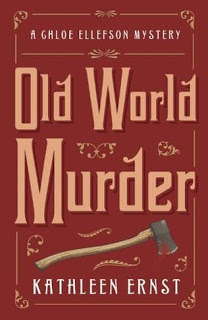
As promised yesterday, fellow Midnight Ink mystery author Kathleen Ernst is visiting my blog today to answer my interview questions and ones asked by my blog readers. To read her bio and see her photo, please page down to yesterday's post. Above is the cover photo for her October 1st release from Midnight Ink, Old World Murder.
In Old World Murder, Chloe Ellefson's new job as Collections Curator at a famous open-air historic site brings her face to face with a murder, a stolen artifact, a boss who seems to know little about running a living history museum, and an intriguing new relationship that just might help her banish the difficult memories she's running from. And that's only her first day.
See what Kathleen Ernst has to say in response to my questions below, and feel free to ask her additional questions in comments. First, here's a message from Kathleen:
"I'm grateful to Beth for allowing me to be a guest here today. And I'm grateful to readers! I love my work, and I'd be nowhere without you. Leave a comment here, and your name will go into a daily drawing for one free book. The winner can choose any of my sixteen titles. Old World Murder, one of my American Girl mysteries, a Civil War novel—the choice will be yours!"
1. Who or what inspired you to start writing and when did you start?
I started writing stories when I was ten or so. My parents, bless 'em, raised their daughters to be readers. I already knew how enjoyable it was to disappear into a book. And somewhere in there I decided it would be even more fun to write my own. Later, struggling through my teen years, I also learned that books can provide an escape from real-life problems.
My inspiration came from many authors. I knew the gift they gave me when they transported me to another time and place, or took me on an adventure, or created a protagonist who seemed to understand exactly how I felt!
2. What tools and process do you use to "get to know" your characters before and while you're writing the books?
I start each new book with a spiral notebook, which I use to scribble notes and ideas about characters. Although I do my actual writing on computer, I often return to the notebook to tinker with ideas. There's something about putting pen to paper that frees up my mind to work in new ways.
I spend much more time thinking about the complexities of the characters than I do with mechanics (physical appearance, etc.). I develop backstories. Lots of that information won't make it to the actual page, but it helps me understand what motivates each character to act or speak as they do.
I have two main characters in Old World Murder, curator Chloe Ellefson and cop Roelke McKenna, because I wanted to be able to provide two points-of-view. I knew I could write Chloe's world successfully—I used to have her job! I knew nothing about police work, though. Fortunately, members of the police department in the village where the book is set have been incredibly gracious. I've gone on a number of ride-alongs, and I had the chance to talk in depth with several officers. Roelke McKenna wouldn't exist without their assistance.
3. How do you construct your plots? Do you outline or do you write "by the seat of your pants"?
I am unable to outline in advance. My brain simply doesn't work that way. (Once, when asked to provide a detailed outline for a possible book deal with a new publisher, I had to write the entire book before being able to write the outline!)
I call myself a "wader," meaning I wade right in. I usually have an idea for a first scene that will propel the protagonist into the story. I've written 15 novels for young readers this way—including eight mysteries—and that approach worked fine. Sometimes I didn't even know "whodunit" myself when I started.
Since Old World Murder is intended for an adult audience, and incorporates more sub-plots, I discovered that I needed to create an outline as I wrote the book. I have a table with the following headings: Date, Chapter, In-Scene (what happens), and Behind the Scenes (what the bad guy/gal is doing that the characters and readers don't know yet, but which is essential that I understand). After I write a new scene, I fill in the chart. During the revision process, I study this timeline/outline to make sure events follow a logical flow.
4. In the age-old question of character versus plot, which one do you think is most important in a murder mystery and which one do you emphasize in your writing? Why?
Character! I could name a dozen series that I love and describe the protagonist and her/his ongoing personal arc in great detail, but not be able to repeat a single plot. I want and need good plots when I read, and strive to create them when I write. But it's the characters that make me stay with the ride.
5. What is the biggest challenge you've faced as a writer and what inspires you and keeps you motivated?
Twenty years passed between the time I wrote my first novel and the time I published my first novel. Before you pre-published authors out there bang your head on the wall, let me point out my biggest mistake: for years I wrote in a vacuum, never getting my work critiqued, never taking classes, never learning about the industry. Once I started doing those things, my career began.
Those weren't wasted years. Writing was my hobby, and I loved it. I was practicing. But there were times when I wondered if I'd ever sell a book.
(By the way…I am now a full-time writer. So it can happen!)
6. What is a typical workday for you and how many hours a day (or week) do you devote to writing?
Monday is usually a "stuff" day, when I try to catch up on email, work on blog posts, maintain financial records, etc., etc. Otherwise, I generally start a day by checking email to see if there's anything that needs immediate attention. Then I write from maybe 10-5. Twice a week I leave home and work at a coffee shop, where I'm totally removed from interruptions.
I probably work 60-70 hours a week. That includes writing, but also everything involved with promotion (website, blogs, Facebook, etc., etc). I do a lot of library research. I attend conferences, visit the locales where books are set. And yes, that's a lot of hours. But I'm doing what I love, and usually, my time is flexible.
Two or three times a year I leave home for a week of intensive writing. When I'm off by myself I often get on a tear and stay up until 2 or 3 in the morning. Those are my most productive periods.
7. What advice do you have to offer to an aspiring author?
1) Learn your craft. Take classes, get feedback. Give yourself permission to take the time you need to finish your book. Then revise, get more feedback, revise some more. Polish. Don't shoot yourself in the proverbial foot by submitting a manuscript that isn't ready!
2) Learn about the publishing industry. Target agents or editors carefully. Going to conferences can help with this, but these days, there is oodles of information available online. Make a personal connection when you can, even if it's only to say in a cover letter, "I know you represent Miss Mystery. I admire her work, and so thought you might also like to read my manuscript."
3) Separate the writing, which should be joyful (at least sometimes!) from the industry, which is rarely joyful. Be good to yourself. Try not to let the inevitable rejections or bad reviews get to you.
8. Now here's a zinger. Tell us something about yourself that you have not revealed in another interview yet. Something as simple as your favorite TV show or food will do.
Well, here's one appropriate for your site, Beth! During my high school and college days, I spent a couple of summers working as a canoe and raft instructor/guide. I love whitewater!
9. What are you working on now and what are your future writing plans?
The second book in my Chloe Ellefson/Historic Sites series, Deadly as Diamonds, is scheduled for publication in October of 2011. I'm developing ideas for books 3 and 4. Since many historic sites close during winter months, I have to plan way ahead.
I am also keeping my hand in the juvenile/young adult world. Currently I'm working on several books for American Girl. They schedule things far in advance of publication, so some of those titles won't come out for a long time.
It can be challenging to juggle so many projects, but it can also be helpful. If I'm having a bad day with one, I spend the next day working on another! Usually, though, I just stack up deadlines and work on whatever is most pressing.
Oh—and when I really need a break, I write poetry!
10. Is there anything else you would like to tell my blog readers?
I am one of the luckiest people in the world. I get to earn my living doing something I love. Thanks again, Beth, for having me here!
Published on October 12, 2010 06:00
October 11, 2010
Tomorrow's Guest: Kathleen Ernst!
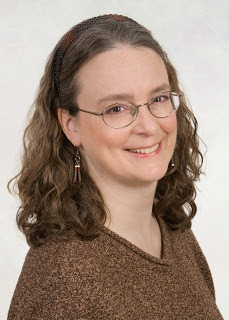
Tomorrow fellow Midnight Ink mystery author Kathleen Ernst will be a guest on my blog. Kathleen is celebrating the publication of her first adult mystery, Old World Murder. She has also written eight mysteries for young readers. Several have been finalists for Edgar or Agatha awards. For more information see her website or her blog.
Kathleen answered my interview questions, and I'm sure you'll be intrigued by what she has to say. Then, feel free to ask her some questions of your own. Also, anyone who leaves a comment on tomorrow's post will be entered into a contest to win a copy of Old World Murder or one of Kathleen's other titles!
Published on October 11, 2010 06:00
October 8, 2010
Peeling the Onion and Backtracking
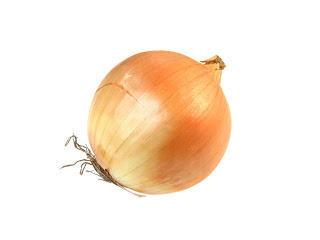
On October 4th, I blogged about hitting the halfway point in my work-in-progress (the third Claire Hanover gift basket designer mystery) and celebrating that milestone. Soon after, though, a nagging feeling that something was wrong with the story started in the back of my brain. I took a break from writing for a couple of days to let that feeling work its way from my subconscious to my conscious brain. You see, I've learned to take my intuition seriously when it comes to my writing.
Finally I realized what the problem was. I had revealed something too early in the story. This is a common mistake for me. As someone who used to write User's Manuals and Design Documents, the drive to explain everything clearly is deeply ingrained in me. However, that doesn't make for a good mystery! In a mystery, things must be left unexplained, or partially explained, so questions are planted in the reader's mind. Those questions, in turn, keep the reader turning pages.
The art of story-telling has often been equated to peeling an onion. Layer after layer is slowly pulled back to reveal some of what lies underneath until gradually the core of the story is revealed. I had peeled back a layer too soon. So, I had to do some backtracking. I pulled the conversation where that tidbit of information was revealed out of the manuscript and figured out how to replace the conversation with one where the information was not revealed--yet. That meant backtracking in my page count. It only took a couple of days of work, then I was moving forward again. It needed to be done, because if the early revelation had propagated throughout the rest of the manuscript, the story wouldn't have been as mysterious and interesting.
Published on October 08, 2010 06:30

